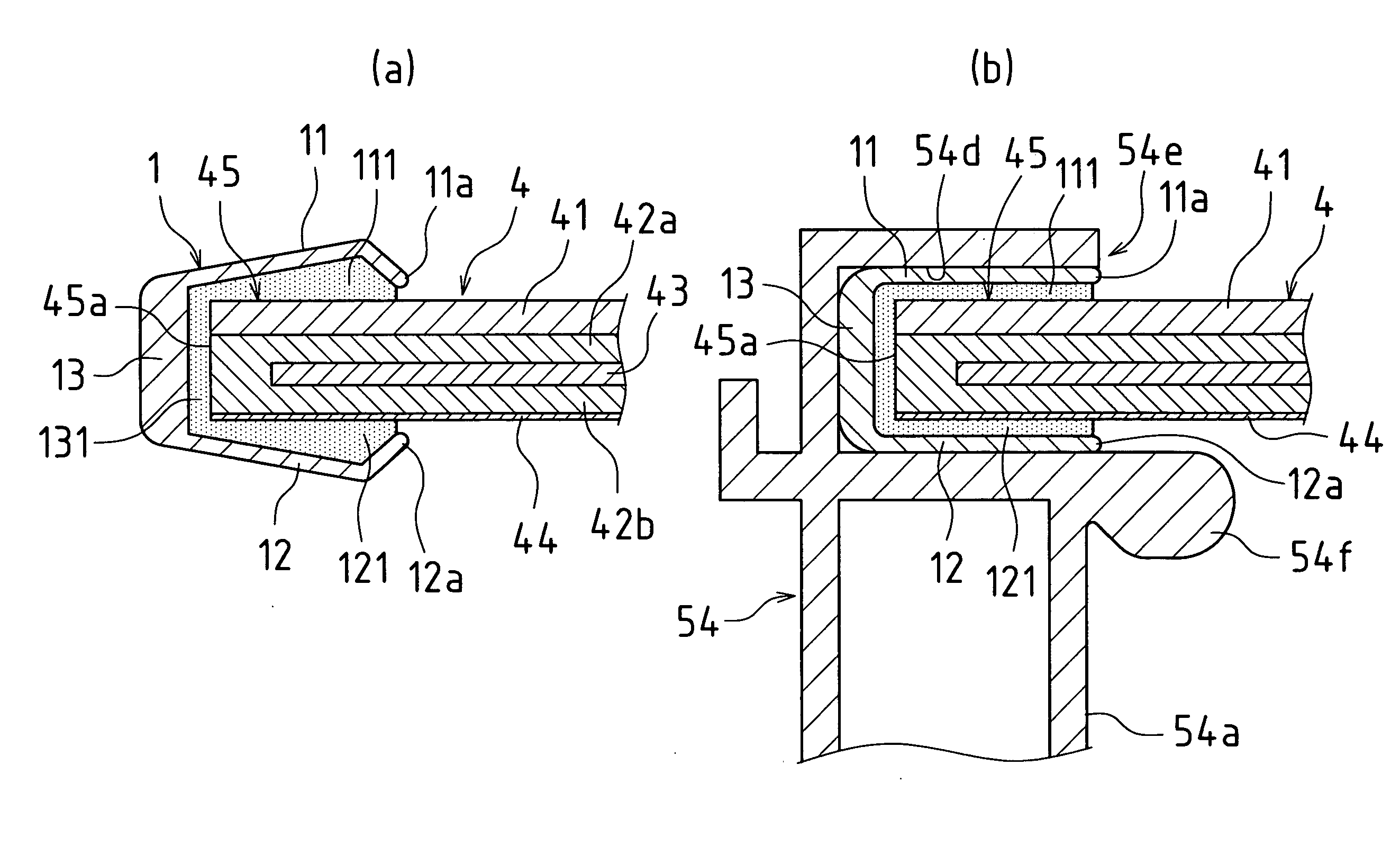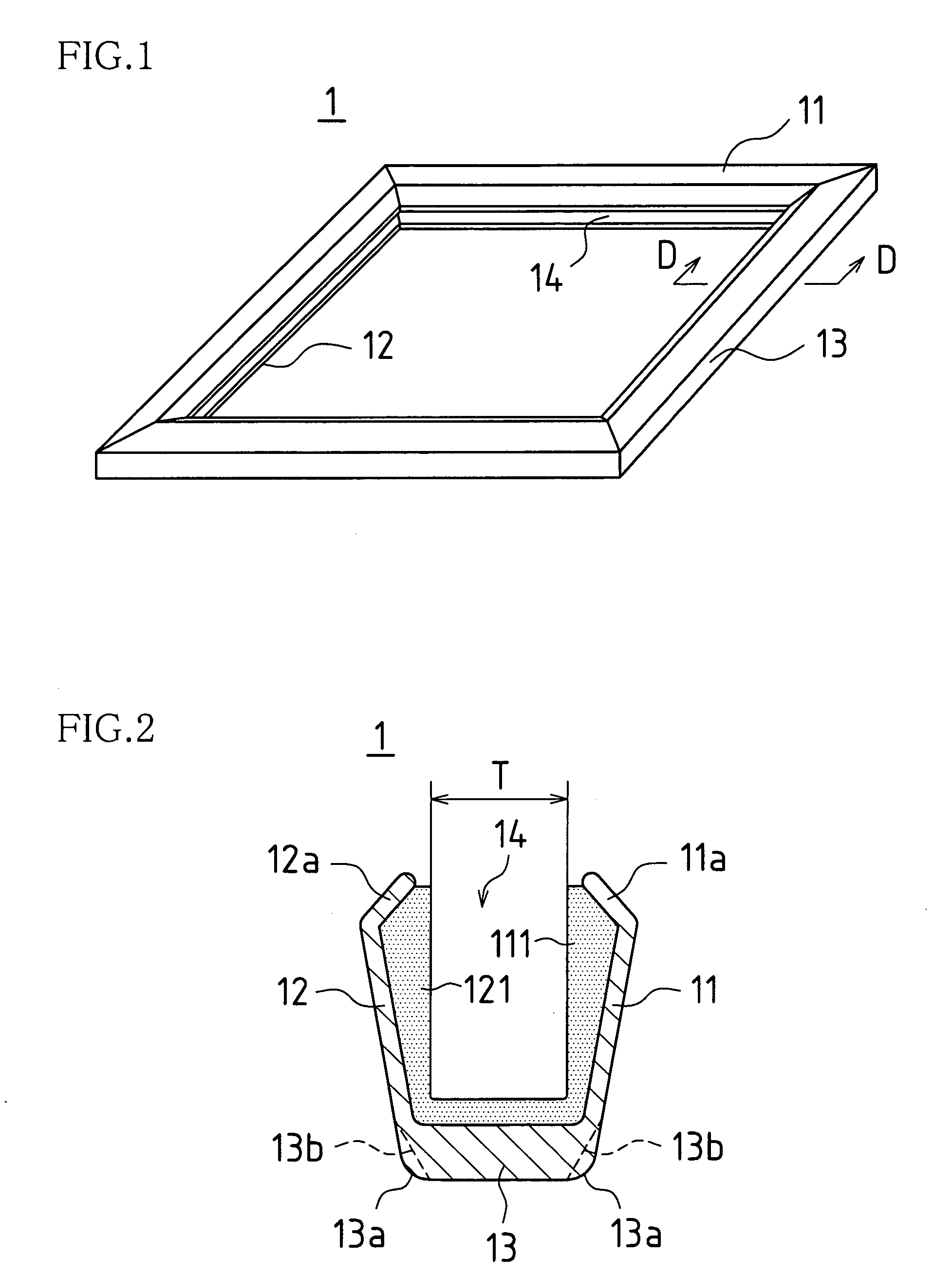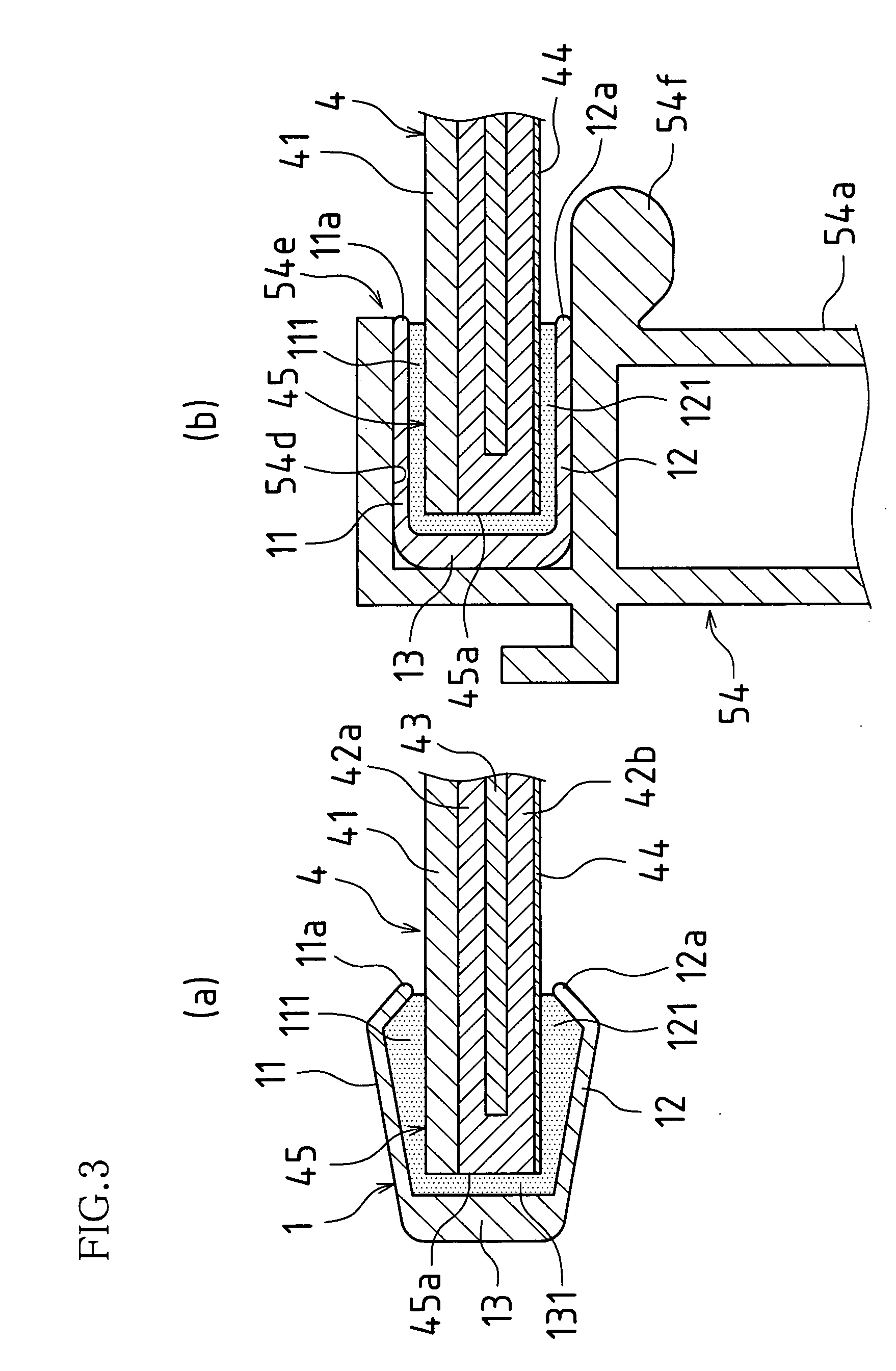Solar cell module edge face sealing member and solar cell module employing same
a solar cell module and sealing member technology, applied in photovoltaic supports, pv power plants, solid-state devices, etc., can solve the problems of increased work operations, difficult to achieve uniform sealing, watertightness, etc., to improve the ease of operation and improve the sealing
- Summary
- Abstract
- Description
- Claims
- Application Information
AI Technical Summary
Benefits of technology
Problems solved by technology
Method used
Image
Examples
first embodiment
[0046] [FIG. 1 is an oblique view of the entirety of an edge face sealing member 1 associated with a first embodiment of the present invention, and FIG. 2 is a cross-sectional view of section D-D in FIG. 1. Note that, in the present first embodiment, the description below is carried out in terms of a solar cell module body employing superstrate structure such as that of solar cell module body 4 shown in FIG. 10, and in terms of a frame body employing structure such as that of frame body 5 shown in FIG. 12.
[0047] This edge face sealing member 1, which is frame-like in shape and is formed in more or less parallel fashion with respect to the outer shape of solar cell module body 4 shown in FIG. 10, is captured by frames 51, 52, 53, and 54 of frame body 5 shown in FIG. 9 so as to be captured thereby along substantially the entire perimeter of edge portion 45 (see FIG. 10) of solar cell module body 4.
[0048] As shown in FIG. 2, this edge face sealing member 1 is roughly c-shaped in cros...
second embodiment
[0054]FIG. 4 is a sectional view of edge face sealing member 1A associated with a second embodiment of the present invention.
[0055] Edge face sealing member 1A of the present second embodiment differs from edge face sealing member 1 of the foregoing first embodiment in that lower sealing region 12A abutting weather-resistant back-surface sealing film 44 of solar cell module body 4 is formed so as to be longer than upper sealing region 11 abutting light-receiving glass surface 41 of solar cell module body 4, the constitution thereof being in other respects similar to that of edge face sealing member 1 of the foregoing first embodiment. Accordingly, where components are identical to those at edge face sealing member 1 of the first embodiment, identical reference numerals will be used and detailed description thereof will be omitted.
[0056] The reason for thus forming lower sealing region 12A such that it is longer than upper sealing region 11 is that, as shown in FIG. 12, flange 54f ...
third embodiment
[0060]FIG. 6 is a sectional view of edge face sealing member 1B associated with a third embodiment of the present invention.
[0061] Edge face sealing member 1B of the present third embodiment differs from edge face sealing member 1 of the foregoing first embodiment in that projections 11b and 12b are respectively formed on facing surfaces of upper sealing region 11 and lower sealing region 12, the constitution thereof being in other respects similar to that of edge face sealing member 1 of the foregoing first embodiment. Accordingly, where components are identical to those at edge face sealing member 1 of the first embodiment, identical reference numerals will be used and detailed description thereof will be omitted.
[0062] These projections 11b, 12b may take the form of single-rib and / or multiple-rib regions (two ribs being formed in the present third embodiment) formed in more or less parallel fashion with respect to perimeter edge portions (sides) of solar cell module body 4, i.e...
PUM
 Login to View More
Login to View More Abstract
Description
Claims
Application Information
 Login to View More
Login to View More - R&D
- Intellectual Property
- Life Sciences
- Materials
- Tech Scout
- Unparalleled Data Quality
- Higher Quality Content
- 60% Fewer Hallucinations
Browse by: Latest US Patents, China's latest patents, Technical Efficacy Thesaurus, Application Domain, Technology Topic, Popular Technical Reports.
© 2025 PatSnap. All rights reserved.Legal|Privacy policy|Modern Slavery Act Transparency Statement|Sitemap|About US| Contact US: help@patsnap.com



